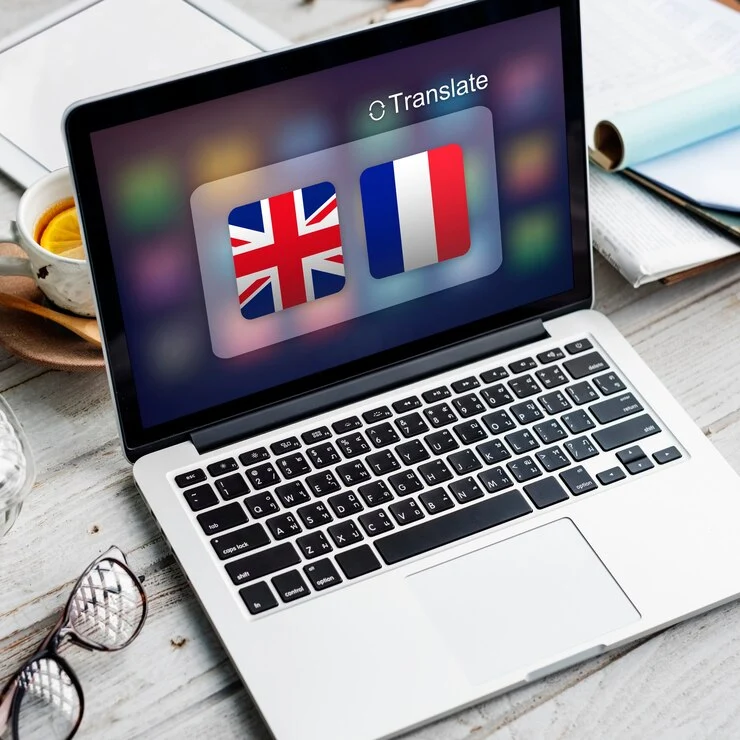Why Go Global? The Benefits of Multilingual SEO
In today’s interconnected digital landscape, the question isn’t whether to go global, but rather how quickly you can expand your international presence. As businesses strive to conquer global markets, multilingual SEO has emerged as a crucial strategy for reaching diverse audiences worldwide. Let’s explore why investing in multilingual SEO can transform your business’s global footprint.
Table of Contents
According to CSA Research, 76% of online shoppers prefer to buy products with information in their native language, while 40% will never purchase from websites in other languages. These statistics alone highlight the immense potential of multilingual SEO for business growth.
Here are the key benefits of implementing a multilingual SEO strategy:
- Expanded Market Reach: Access new markets and demographics previously untapped due to language barriers
- Increased Trust and Credibility: Build stronger connections with local audiences by speaking their language
- Competitive Advantage: Stay ahead of competitors who haven’t yet invested in multilingual optimization
- Higher Conversion Rates: Convert more visitors into customers by providing content in their preferred language
- Improved Brand Recognition: Establish your brand as a global player in your industry
Consider this: research shows that websites implementing proper multilingual SEO strategies typically see a 100-500% increase in international organic traffic. This dramatic improvement stems from targeting country-specific search engines and optimizing content for local search patterns.
Moreover, multilingual SEO isn’t just about translation – it’s about creating culturally relevant content that resonates with each target market. By incorporating local keywords, cultural nuances, and market-specific preferences, businesses can create meaningful connections with international audiences.
The investment in multilingual SEO becomes even more compelling when considering that global e-commerce sales are projected to reach $6.4 trillion by 2024. To capture your share of this expanding market, mastering multilingual SEO isn’t just an option – it’s a necessity for sustainable growth in the digital age.
As we continue exploring strategies to master multilingual SEO and content marketing, remember that the journey to global market dominance begins with understanding and implementing these fundamental benefits.

What is Multilingual SEO?
Multilingual SEO is a specialized digital marketing strategy that optimizes website content for multiple languages and regional markets while maintaining search engine visibility across different territories. It’s more than just translating content—it’s about creating a comprehensive approach to reach and engage audiences in their native languages while following local SEO best practices.
At its core, multilingual SEO involves several key components:
- Content Localization: Adapting content to reflect local cultural nuances, preferences, and search behaviors
- Technical Implementation: Using proper hreflang tags, URL structures, and country-specific domains or subdomains
- Keyword Research: Identifying and targeting relevant keywords in each target language
- Local Search Optimization: Optimizing for local search engines (like Baidu in China or Yandex in Russia)
According to research by CSA Research, 76% of online shoppers prefer to buy products with information in their native language. This highlights the importance of implementing a robust multilingual SEO strategy for businesses looking to conquer global markets.
The implementation of multilingual SEO requires careful consideration of various technical aspects:
- URL structure (using either ccTLDs, subdomains, or subdirectories)
- Content management system capabilities
- International targeting settings in the search console
- Local server locations and hosting considerations
One common misconception is that multilingual SEO simply involves translating existing content. However, successful implementation requires a deep understanding of local search patterns, cultural preferences, and market-specific optimization techniques. This comprehensive approach ensures that your content not only reaches but truly resonates with your target audience in each market.
By implementing a well-planned multilingual SEO strategy, businesses can significantly increase their global visibility, attract more qualified traffic, and ultimately drive better conversion rates across different markets and languages.
How to Do SEO in Multiple Languages
Implementing multilingual SEO is a complex yet crucial process for businesses aiming to conquer global markets. With over 70% of internet users preferring to browse content in their native language, mastering multilingual SEO can significantly impact your international success.

Technical Implementation Essentials
To effectively implement multilingual SEO, start with these fundamental technical aspects:
- URL Structure: Choose between subdirectories (example.com/fr/), subdomains (fr.example.com), or country-specific domains (example.fr)
- Hreflang Tags: Implement proper hreflang annotations to help search engines understand language relationships between pages
- Content Management System: Use a CMS that supports multiple languages and proper URL structures
- Site Architecture: Maintain consistent navigation across all language versions
Content Localization Strategy
Simply translating content word-for-word isn’t enough. Consider these crucial elements:
- Keyword Research: Conduct fresh keyword research in each target language
- Cultural Adaptation: Modify content to reflect local customs, preferences, and cultural nuances
- Local Link Building: Develop relationships with local websites and influencers
- Content Calendar: Account for different seasonal trends and local events
Quality Control Measures
Maintain high standards across all language versions with these practices:
- Native Speakers: Work with local SEO experts and content creators
- Regular Audits: Conduct periodic reviews of all language versions
- Performance Tracking: Monitor metrics separately for each language/region
- User Experience: Ensure consistent loading speeds and mobile optimization across all versions
Remember, successful multilingual SEO requires ongoing attention and refinement. Regular monitoring and updates ensure your content remains relevant and effective across all target markets, helping you truly master multilingual SEO and content marketing in global markets.

How Do I Optimize a Multilingual Website?
Optimizing a multilingual website is a crucial step in your journey to conquer global markets through effective multilingual SEO and content marketing. With over 70% of internet users preferring to browse in their native language, proper optimization can significantly impact your international success.
Here’s a comprehensive guide to optimizing your multilingual website effectively:
Technical Implementation
- Use Proper URL Structure: Implement either ccTLDs (country-specific domains), subdirectories (/fr/, /es/), or subdomains (fr.website.com) consistently
- Implement Hreflang Tags: Use these tags to tell search engines which language you’re using on specific pages
- Enable UTF-8 Character Encoding: Ensure proper display of special characters across different languages
Content Optimization Strategies
- Localize, Don’t Just Translate: Adapt content for cultural nuances and local preferences
- Optimize Local Keywords: Research and target language-specific keywords for each market
- Create Market-Specific Content: Develop unique content that resonates with each target audience
User Experience Considerations
To enhance user experience across different languages:
- Include clear language selection options in visible locations
- Maintain consistent branding across all language versions
- Optimize loading speeds for all regional versions
- Ensure mobile responsiveness for all language versions
Remember that successful multilingual optimization is an ongoing process. Regularly monitor your analytics to track performance across different languages and markets, and make adjustments based on user behavior and engagement metrics.
By following these optimization strategies, you’ll be better positioned to effectively reach and engage international audiences, ultimately helping you master multilingual SEO and content marketing in global markets.

What is the Best Way to Make a Multilingual Website?
Creating a multilingual website is a crucial step in your journey to conquer global markets. With 76% of online consumers preferring to buy products in their native language, implementing an effective multilingual strategy isn’t just an option—it’s a necessity for global success.
Here are the essential steps to create an effective multilingual website:
- Implement Proper URL Structure
- Use language-specific subdomains (es.website.com)
- Create language-specific subdirectories (website.com/es/)
- Use country-specific domains (website.es)
- Use hreflang Tags
- Implement proper hreflang annotations to indicate language variations
- Include x-default tag for international visitors
- Professional Translation Services
- Invest in native speakers for authentic translations
- Avoid machine translation for critical content
- Consider cultural nuances and local idioms
Beyond these technical aspects, consider implementing these best practices:
- Use a content management system (CMS) that supports multilingual content
- Create a user-friendly language switcher that’s easily visible
- Optimize images and media with language-specific alt tags
- Implement responsive design that works across all language versions
Remember to maintain consistency across all language versions while adapting to local preferences. Research shows that websites implementing these best practices see an average increase of 47% in international conversion rates.
A successful multilingual website requires ongoing maintenance and updates. Set up a workflow to ensure all language versions stay synchronized and regularly audit your content for consistency and accuracy. This systematic approach will help you effectively reach and engage global audiences while maintaining your brand’s integrity across all markets.
By following these guidelines, you’ll be well-positioned to create a multilingual website that effectively serves your global audience and helps you achieve your international business objectives.
Keyword Research & Targeting for Multilingual Sites
When aiming to conquer global markets through multilingual SEO & content marketing, proper keyword research becomes exponentially more complex – and crucial. Unlike single-language SEO, you’re not just finding keywords; you’re discovering how your target audience searches in different languages and cultures.
Here’s a comprehensive approach to multilingual keyword research:
- Avoid Direct Translation: Simply translating your English keywords into other languages often leads to mistakes. For example, “car insurance” directly translated to Spanish might miss how locals actually search for this service.
- Local Search Behavior Analysis: Different cultures have different search patterns. Research shows that Japanese users often type full questions, while German users prefer precise, shorter keywords.
- Regional Variations: Consider dialectal differences. Spanish speakers in Mexico might use different terms than those in Spain for the same product.
- Search Volume Verification: Use country-specific Google tools to verify search volumes in each target market.
To effectively implement keyword targeting for multilingual sites, consider these best practices:
- Local Keyword Tools: Utilize tools like Ahrefs or SEMrush with their country-specific databases
- Cultural Context: Work with native speakers to understand cultural nuances and search intent
- Competitor Analysis: Study successful local competitors in each market to understand their keyword strategies
- Search Intent Alignment: Ensure keywords match local user intent and buying behavior
Remember to maintain separate keyword lists for each language and market. According to recent studies, 76% of online shoppers prefer to buy products with information in their native language, making proper keyword targeting essential for global success.
When implementing your keyword strategy, create a systematic approach to track performance across different markets. This helps identify which keywords drive the most engagement and conversions in each region, allowing for continuous optimization of your multilingual SEO efforts.
Does language matter for SEO?
Yes, language absolutely matters for SEO, both in terms of the actual language you're writing in (like English, Spanish, etc.) and how you use that language. Search engines are designed to understand and serve content that best matches user intent, and language plays a crucial role in this matching process.
Using natural, clear language that aligns with how your target audience searches is essential for SEO success. This means incorporating relevant keywords thoughtfully while maintaining readability and avoiding keyword stuffing. Additionally, using proper grammar, spelling, and syntax helps search engines better understand your content.
Key Takeaway: Focus on writing in your target audience's language patterns. For example, if your audience typically searches for "how to fix a leaky faucet" rather than "plumbing repair solutions," align your content with their natural language choices.
Remember: Good SEO writing is about balancing search engine requirements with human readability.
How do you create multilingual content?
Creating Multilingual Content: A Strategic Approach
Creating effective multilingual content requires a systematic approach that goes beyond simple translation. Start by determining your target languages based on market research and audience demographics. Rather than relying solely on machine translation, work with professional translators who understand both language and cultural nuances.
Consider implementing a localization strategy that adapts content to reflect local customs, idioms, and preferences. This includes modifying images, colors, and examples to resonate with each target audience.
For website content, use proper HTML lang attributes and implement hreflang tags to help search engines understand your multilingual structure. Consider using a content management system (CMS) that supports multilingual capabilities to streamline the process.
Key takeaway: Always create content in your primary language first, then adapt it for other markets using professional translation services and cultural consultation to ensure accuracy and relevance.
What is multilingual content development?
Multilingual content development is the strategic process of creating, adapting, and managing content across multiple languages while maintaining consistency in brand message, tone, and purpose. This practice goes beyond simple translation to include cultural adaptation (localization) and market-specific customization of content for different target audiences worldwide.
The process typically involves:
• Professional translation services
• Cultural context adaptation
• Local SEO optimization
• Market-specific formatting and design adjustments
Key Takeaway: When developing multilingual content, always start with a content strategy that includes a style guide for each target language and culture. This ensures consistency across all versions while respecting local nuances.
Successful multilingual content development enables businesses to effectively reach global audiences, build trust in local markets, and maintain brand consistency across different languages and cultural contexts. It's an essential tool for organizations looking to expand their international presence in today's interconnected world.
What is the best language for SEO?
The best language for SEO is natural, user-focused English that balances keyword optimization with readability. While search engines support multiple languages, English dominates global search queries and typically offers the widest reach for most websites.
However, the "best" language ultimately depends on your target audience and market. If you're targeting a specific region or demographic, using their primary language is crucial for effective SEO. For example, Spanish might be more effective if targeting Latin American markets.
Key tip: Focus on writing clear, conversational content that addresses user intent rather than stuffing keywords. Google's algorithms now prioritize natural language and user experience over technical optimization.
The optimal approach is to write in your target audience's preferred language while following SEO best practices like proper keyword placement, clear heading structure, and valuable content that answers user queries effectively.
Does Google Translate work for SEO?
Does Google Translate Work for SEO?
Google Translate is not recommended for SEO content translation. While it's a useful tool for basic communication, it often fails to capture the nuances, context, and cultural elements essential for effective SEO content. Machine translation can lead to awkward phrasing, grammatical errors, and incorrect keyword usage, potentially harming your site's search rankings and user experience.
For effective multilingual SEO, consider these best practices:
• Work with native-speaking translators who understand SEO
• Use human translators for keyword research in target languages
• Implement proper hreflang tags for international targeting
• Create unique meta descriptions and titles for each language
The bottom line: While Google Translate might be tempting as a quick solution, investing in professional translation services will yield better SEO results and help maintain your brand's credibility in international markets.
